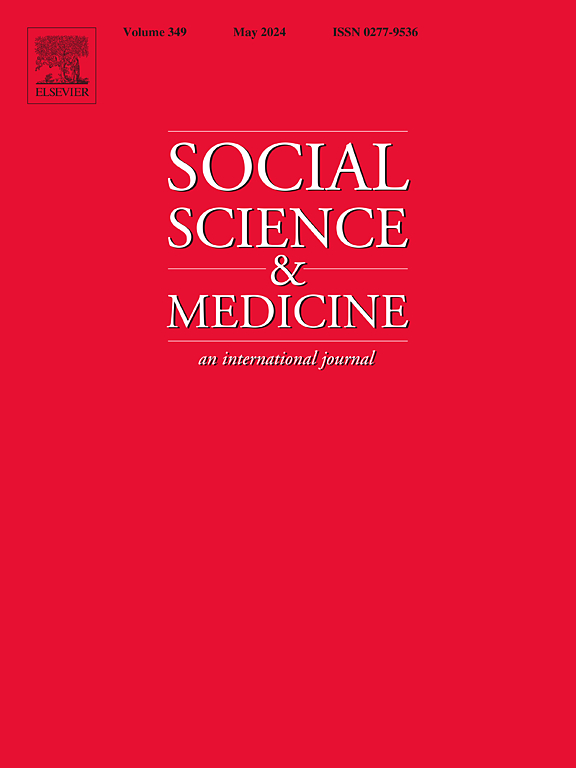Sources and processes of social influence on health-related choices: A systematic review based on a social-interdependent choice paradigm
IF 4.9
2区 医学
Q1 PUBLIC, ENVIRONMENTAL & OCCUPATIONAL HEALTH
引用次数: 0
Abstract
Background
Most choices in healthcare are not made in social isolation. However, current econometric models treat patients' preferences as the sole determinants of their choices.
Through the lens of sociology and medical sociology theories, this paper presents a systematic literature review of identifiable social influences on patients’ choices, serving as a first step in developing a social-interdependent choice paradigm.
Methods
Following the PRISMA guideline and using nine databases, we identified the individual agents or groups involved in health-related choices, the functional content through which social relationships influence patients, and the choice constructs affected by these processes. From 9036 screened articles, we selected 208 to develop an analytical framework connecting social relationships with choice constructs.
Results
Social influences predominantly come from family, friends, specialized physicians, and general practitioners. We decomposed the functional content of social relationships into functions and contents. Dyadic interactions and expert knowledge were prominent functions, followed by social control. Prescriptive and informational contents were prevalent, followed by instrumental and emotional ones. Expert knowledge and social norms aligned with prescriptive and informational signals, while dyadic interactions provide emotional and instrumental signals. Reference points for social norms included friends, coworkers, and patients. Social relationships primarily impact which alternatives are evaluated, followed by alternative evaluation strategies and goal selection. Distinctions between medical domains and dimensions emerged, highlighting how the medical area conditions the social influence process.
Conclusion
This systematic review presents a comprehensive framework that elucidates the social influence process in healthcare patient decision-making. By detailing the functional content of social relationships into functions and contents and linking these components to the elements of the choice process, we created a structured approach to understanding how social relationships impact patient choices. This will facilitate the systematic integration of social relationships into econometric models of patient choice.
社会对健康相关选择影响的来源和过程:基于社会相互依存选择范式的系统回顾。
背景:大多数医疗保健选择都不是在孤立的社会环境中做出的。然而,目前的计量经济学模型将患者的偏好视为其选择的唯一决定因素。本文通过社会学和医学社会学理论的视角,对患者选择中可识别的社会影响因素进行了系统性的文献综述,作为建立社会相互依赖选择范式的第一步:按照 PRISMA 指南,我们利用九个数据库,确定了参与健康相关选择的个体或群体、社会关系影响患者的功能内容,以及受这些过程影响的选择结构。从筛选出的 9036 篇文章中,我们选出了 208 篇,以建立一个分析框架,将社会关系与选择结构联系起来:社会影响主要来自家庭、朋友、专科医生和全科医生。我们将社会关系的功能内容分解为功能和内容。其中,双向互动和专家知识是最主要的功能,其次是社会控制。规定性和信息性内容占主导地位,其次是工具性和情感性内容。专家知识和社会规范与规定性和信息性信号一致,而双向互动则提供情感性和工具性信号。社会规范的参照点包括朋友、同事和病人。社会关系主要影响评估哪些替代方案,其次是替代方案评估策略和目标选择。医疗领域和维度之间出现了区别,突出了医疗领域是如何影响社会影响过程的:本系统综述提出了一个全面的框架,阐明了医疗患者决策中的社会影响过程。通过将社会关系的功能内容细化为功能和内容,并将这些组成部分与选择过程的要素联系起来,我们创建了一种结构化的方法来理解社会关系如何影响患者的选择。这将有助于将社会关系系统地纳入患者选择的计量经济学模型。
本文章由计算机程序翻译,如有差异,请以英文原文为准。
求助全文
约1分钟内获得全文
求助全文
来源期刊

Social Science & Medicine
PUBLIC, ENVIRONMENTAL & OCCUPATIONAL HEALTH-
CiteScore
9.10
自引率
5.60%
发文量
762
审稿时长
38 days
期刊介绍:
Social Science & Medicine provides an international and interdisciplinary forum for the dissemination of social science research on health. We publish original research articles (both empirical and theoretical), reviews, position papers and commentaries on health issues, to inform current research, policy and practice in all areas of common interest to social scientists, health practitioners, and policy makers. The journal publishes material relevant to any aspect of health from a wide range of social science disciplines (anthropology, economics, epidemiology, geography, policy, psychology, and sociology), and material relevant to the social sciences from any of the professions concerned with physical and mental health, health care, clinical practice, and health policy and organization. We encourage material which is of general interest to an international readership.
 求助内容:
求助内容: 应助结果提醒方式:
应助结果提醒方式:


